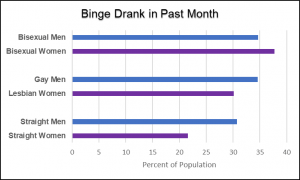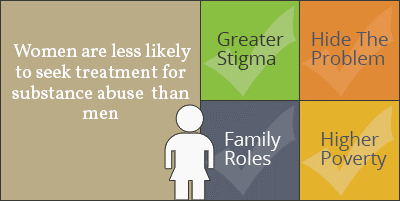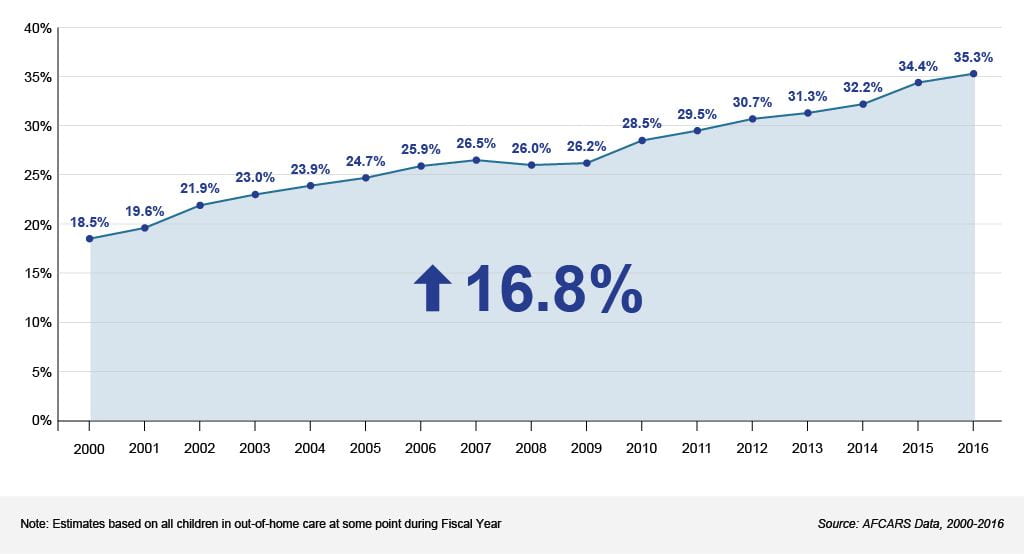My blog post follows the approach of our book, Drink by author Ann Dowsett-Johhnston. That is to say that I intend it to be a combination of personal reflection and themes that I distilled from an analysis of recent news articles – specifically ones published about alcohol this year in the New York Times and Atlanta Journal-Constitution. During the first two months of 2020, Covid was regarded as a Chinese problem – not something for US residents to worry about. Despite that belief, it quickly became personal for me – although not in a way that implies contagion and illness.
First of all, I had spent 3 weeks traveling in China during mid-to-late November 2019, as a result of a grant I received from the Chinese government to cover my travel funding to start some research projects and give talks at a few Chinese universities. I had been studying Chinese language off-and-on for nearly 15 years and also doing research with Chinese colleagues and teaching as a Visiting Professor in China for a decade, mostly in Wuhan – that’s right, the epicenter of the Covid virus. I began teaching in 2009 at a university in Wuhan (Huazhong University of Science & Technology), and 2019 represented my fifth visit to Wuhan. In fact, Wuhan was one of five cities that I visited during my nearly 3-week trip, and it was there I spent Thanksgiving a few months ago. Based on the initial accounts of when the Covid virus appeared, the virus had not yet started when I was there in late November. But newer data suggests otherwise – that the Covid virus was likely already present in Wuhan at the time but not yet an epidemic.
The second reason that it became personal was that, in early March 2020, I heard about the first deaths of US residents – what they labeled as “community transmission” – at a long-term care facility linked to Evergreen Hospital in Kirkland, a suburb of Seattle, just across narrow Lake Washington from Seattle. I had lived in Kirkland during my high school years over 45 years ago, and Evergreen Hospital was our local, hospital newly-built at the time. These initial deaths were the first ones without any obvious link to travelers from China – so, indeed community transmission. So, Covid situation had some personal links already.
During mid-March, I traveled to south Florida for my “Spring Break” from Georgia Tech. While I was mostly in Miami Beach (southeast corner of Florida), it was at the other corner, southwest Florida, where my story continues. I spent a few days with my brother, who lives on the border of North Naples and Bonita Beach starting on St. Patrick’s Day. By that date (March 17th), the TV news was already full of Covid reports. Many school districts and universities throughout the country had announced their closings. Even as Georgia Tech started its spring break, it seemed fairly certain that we would not be returning to campus anytime soon. Even in the balmy paradise of sun and beaches in south Florida, the virus was being taken seriously. Local bars had closed the night before (March 16th). In Florida, all closures were on a county-by-county basis. Unlike some states, which made closure decisions by the Governor, at the state level, things were done regionally, by county, in Florida. I rationalized that such localism made sense in certain states – especially ones that are mostly rural, but which have a few big cities or, in this case, huge concentrations of tourists along the coasts, but which are less-densely populated inland and elsewhere.
From my perspective that, week in southwest Florida, it meant there would be no more alcohol served in Lee County bars from then on; however, at that time, restaurants, gyms, beaches, and swimming pools were still open. As we all know, everything would abruptly change in a few days.
On that St. Patrick’s evening, my brother first announced that his wife’s family from Albany (New York) would be joining us for dinner, but then said that he canceled dinner reservations because the restaurants were too crowded. It would be safer for us to have take-out pizza at home. A smart move! But after dinner, we walked to a nearby bar (“Docs Beach House”) for a drink and a view of sunset. Docs was packed – after all, it was St. Patrick’s Day! The outdoor tables on the narrow sand beach were full of people, but we managed to secure a table for our group of six people.
Given the beautiful sunset and the festivity of St. Patrick’s Day, many people were taking photos of sunset. One well-dressed middle-aged couple with teenaged kids, who were celebrating their anniversary, asked us to take a photo of them with the sunset. My brother’s wife readily accepted their cellphone in order to take their photo and then passed the camera back to them. Something about the whole situation felt wrong! While our group of six people was at least six feet away from other picnic tables and their occupants, the beach scene was really festive – not what we have since come to expect as appriate “social distancing.” And why was this bar with all its revelers even open – after all, the bars in this county had been closed since the day before – right? Oh yeah, this place was a restaurant, too, even if that just meant that it served food in another building 40 feet away. That meant that we were able to order bar drinks on sit at outdoor tables on the beach. As we walked back to my brother’s house, we commented on the smaller-than-usual number of cars parked in front another waterside restaurant, Coconut Jack’s. I wouldn’t want to sit at one of those restaurant tables if another patron was contaminated. It seemed that the conflicting signals were all around.
A bar could operate and serve drinks to milling customers, as long as they had a restaurant on the same property. Business was down, but restaurants were still open. Upon returning to my brother’s house, the other family members left, and I announced that I was going out for a drive to buy – what else – some alcohol. I found a nearby liquor store in Bonita Beach and, as I was leaving, I asked the cashier (who was likely the owner) “How busy have you been today?” He responded that sales were way up that day – just one day after the bar ban went into effect. Already, this was evidence that, if bars were closed, then people were taking care to purchase their alcohol in other ways. And that was just Day 1 of the new regime.
My next few days in southwest Florida were interesting with regard to recognizing the county-specificity of the closures. My brother’s condo was on the border of Bonita Beach (Lee County) and North Naples (Collier County), which both ended up closing their beaches, but on sequential days. This meant that I was able to bike to one beach, Barefoot Beach in North Naples – basically across the street – to be present for its last day of operation on Wednesday, March 18th and then do the same the following day at a Lee County beach. The only difference was that, on Thursday, my brother and I drove to a much longer (2 miles long), crowded beach in Ft. Myers Beach. We did a really long walk up-and-back along the white sand. As we returned to our claimed spot at 4 p.m., we noticed a jeep packed with (what seemd to be) Army SWAT team soldiers driving down the beach. We were within just 3 hours of a historic closing of this huge, 2-mile Ft. Myers Beach. We discussed what we saw and both assumed that the “soldiers” (who were really just local police who liked to dress up) were getting into position at the end of the beach in time for the 7 pm closure.
I drove back to Miami Beach the next day to find that similar county-ordered closings had occurred there as well. By Saturday, not only bars, but also beaches, restaurants, libraries, and museums were all closed. Not only were there now far fewer things to do in Miami Beach now, but all my routine sources of wi-fi for my laptop were now discontinued. I could survive a few final days of spring break with no beaches or restaurants, but no wi-fi for my laptop? That’s a much more serious problem!
In my first days after returning back to Atlanta the fourth week of March, I began seeing news articles saying that both alcohol sales and also marijuana sales were way up (www.nytimes.com/article/coronavirus-weed-marijuana.html?searchResultPosition=23), and the sources I read stated that women were the biggest growth market. As I read such articles about increased substance purchases by women, I wondered whether the data were just anecdotal or whether anyone was officially tracking these changes in sales patterns. One sentence from the article I read March 24th said “Women and young people (Generation Z) accounted for much of the sales growth, according to Headset” – which is a cannabis market research company.
Now that two months have passed and I am writing this blog about women and alcohol during times of Covid, I fondly recall those early stories – which doesn’t necessarily mean that I can find them again via online searches. While I enjoy reading two newspapers on a daily basis (the New York Times and the AJC), that doesn’t necessarily mean that I can even locate the exact same articles online, even after I know I read them in the print edition. (I believe the AJC has a notoriously awful search feature). So, rather than quote those early articles about women’s increasing use of alcohol and other substances to help them with “sheltering in place,” I decided to search for articles in both outlets containing the word “alcohol” – and then do an informal analysis of what fraction of articles specifically focus on women or on Covid. I soon learned that, just because these articles were published during the time of Covid, and our new sheltering in place regime, that does not necessarily mean that all articles about alcohol address Covid concerns.
I first searched the New York Times – finding 11 articles about alcohol since January 1st. Of course, I did not expect those published during January or February to focus on Covid, since the virus was still considered a Chinese-only problem at that time. What amazed me about the 11 article I found were variations in the length of the articles. The two longest articles by far – in terms of number of words – were ones about celebrities: Ben Affleck and Jessica Simpson, both of whom have struggled with alcohol addiction. I found the Ben Affleck one a better read, in part, because it previews an upcoming film in which Ben plays an alcoholic coach ( www.nytimes.com/2020/02/18/movies/ben-affleck.html?searchResultPosition=13). It also describes Ben’s struggles with alcoholism, as well as similar struggles by his brother Casey (also an actor), his father, and various other family members. So, the genetic factor is clearly present in Ben’s life – a theme that also appears in Ann Dosett’s Johnston’s book. The companion article about Jessica Simpson was nearly as long, but less interesting, in my opinion (www.nytimes.com/2020/01/29/style/jessica-simpson-memoir-alcohol-addiction.html?searchResultPosition=15). I like it when celebrities “come clean” about their struggles with addiction; however, it does help if they have real talent, however, and not just MTV celebrity. Then again, I admit there is huge value in celebrities – even Jessica Simpson – discussing their struggle with alcohol addiction, as it provides positive encouragement for their fans and other readers to seek help.
After reading those two celebrity profiles, I found a unique Times piece that’s a series of graphics by artist Joe Maccarone, with some reflections about the challenges of being in recovery during Covid isolation (www.nytimes.com/2020/04/04/opinion/sunday/op-art-recovery-in-isolation.html?searchResultPosition=5).
I analyzed the remainder of the articles for their degree of focus on women and the same with regard to Covid. Of the remaining 8 articles about alcohol published in the New York Times this year, just one dealt with both women and Covid. This article by Corinne Purtill (titled: “Quarantini Anyone? When Everyday Drinking Becomes a Problem”) (www.nytimes.com/2020/04/30/us/30IHW-drinking-women-coronavirus-quarantine-habit.html?searchResultPosition=2), discusses the challnenge of women drinking during the Covid situation and describes a recent book by Kristi Coulter with the title, Nothing Good Can Come From This. The latter 2018 books deals with the author’s experience with alcohol addiction.
Of the others, 4 dealt with alcohol amidst the Covid epidemic (but not mentioning women specifically); 2 dealt with women and alcohol (but not Covid), and one dealt with neither. All were fascinating reads! One focused on drinking and violence in Russia during the epidemic (www.nytimes.com/2020/04/14/world/europe/russia-coronavirus-alcoholism.html?searchResultPosition=4), while several others dealt with people who are in alcohol recovery trying to go it alone in the absence of AA meetings – with titles like “Staying Sober During a Lockdown” (www.nytimes.com/2020/04/02/nyregion/coronavirus-alcoholics-anonymous-online.html?searchResultPosition=6) and “With Meetings Banned, Millions Struggle to Stay Sober on Their Own” (www.nytimes.com/2020/03/26/health/coronavirus-alcoholics-drugs-online.html?searchResultPosition=8). I guess that Joe Maccarone’s art graphics, above, also belonged to that category.
The ones dealing with women and alcohol, but not Covid, were all fascinating. One from January, analyzed recent medical studies on the dangers of alcohol to women – echoing what we have read in Ann Dowsett Johnston’s book, Drink (www.nytimes.com/2020/01/10/health/alcohol-deaths-women.html?searchResultPosition=17) and (www.nytimes.com/2020/01/31/sunday-review/alcohol-drinking-problem.html?searchResultPosition=14).
The one article that dealt with neither Covid nor women, summarized a recent article that meta-analyzed 27 studies showing that A.A.’s approach to treating alcohol dependency is more effective than other treatments (www.nytimes.com/2020/03/11/upshot/alcoholics-anonymous-new-evidence.html?searchResultPosition=11).
Probably the strangest article in the whole bunch was one about the challenges of drinking bottles of wine alone – when they are intended to be shared. With the catchy title of “Wine Is for Sharing: What Does That Mean in Self-Quarantine?,” at first, I thought the author was discouraging readers from drinking an entire bottle on their own, but I was wrong. The author took no such position either way. In my humble opinion, I thought that this article failed to make a clear point (www.nytimes.com/2020/03/16/dining/drinks/drinking-alone.html?searchResultPosition=9). This article is an opinion piece, but even so, I was surprised that the New York Times published it. In another course, I had recently been required to write a New York Times-style opinion piece type article, and after reading thr paper’s rules for writing such pieces, combined with how choosy they were about deciding which ones to publish, I was surprised they published this one, because the writer seemed to lack a clear point. Perhaps that is explained by the question mark after the title: “Wine Is for Sharing: What Does That Mean in Self-Quarantine?”
I performed similar searches on the topic of alcohol in the Atlanta Journal Constitutition. I am surprised at the paucity of articles about women and alcohol in the AJC, especially because I know that the paper has carried many stories about the stress of working from home, challenges of involuntarily home-schooling children, and how people are trying to survive the new regime. None of the articles I found about alcohol in the AJC deal with women. There were, however, many articles examining how alcohol sales had increased in Georgia (www.ajc.com/news/state–regional-govt–politics/georgians-stock-alcohol-residents-stay-home-face-virus/CunpBv3qb9xJIqrSmFTCJK/), and also the consumer pressure on restaurants doing take-out and delivery to include alcohol with food, which apparently required a change in laws (www.ajc.com/news/local/demand-for-alcohol-delivery-georgia-highlighted-coronavirus/D4IJePNLDUVCzQsOxHe93K).
Two articles warned readers of the dangers of drinking alcohol during the Covid crisis (www.ajc.com/news/health-med-fit-science/why-who-says-you-should-avoid-alcohol-during-pandemic/ZF533ab97paoRYO30Lo4PM/) and also (www.ajc.com/news/local/alcohol-consumption-may-increase-odds-getting-covid-says-who/PfesOxuCShOtjb3nyiizhI/), but another one alerted readers to “Drink Trends to Watch for in 2020” – OK, so that last one was published in late January, many weeks before we started to take Covid seriously (https://www.ajc.com/blog/atlanta-restaurants/industry-experts-weigh-the-drink-trends-watch-2020/xdFo2TB4qXJ7JCu6Wm3q5L/). While there were no articles about women and alcohol, there was a fascinating piece about a successful restaurateur, Steve Palmer, creator of a many Atlanta restaurants, who shared his struggles with alcoholism. He described alchol dependence as “the dirty secret” of the restaurant industry (www.ajc.com/entertainment/dining/restaurateur-steve-palmer-shares-struggle-with-sobriety-new-memoir/3AaXLS8iNMkUIqHHMFgx2I/).
I found several articles each about an alcohol distillery in Lillburn (Georgia) switching its production over to make hand sanitizer, as well as about a small town called Cleveland in the north Georgia mountains that people are calling “Nappalachia” – apparently a reference to its wines and restaurants. The article about the distillery producing hand sanitizer was preceding by a month with an article saying that the US federal laws porhibit such repurposing (i.e., it is illegal to take ethanol originally intended for drinking to instead use it as an ingredient to produce hand sanitizer) – which sounds crazy – so it’s good that they finally relented and changed the law (www.ajc.com/news/local/gwinnett-distillery-making-hand-sanitizer-for-neighbors-police/mrdmKdjJreAYEcuhIKfPnL/).
In comparing what I found in the New York Times to the Atlanta Journal Constitution, I was urprised that none of the articles I found in the AJC focused on issues about women’s drinking – given all the attention paid to this topic in the Times in recent months. Among the latter, I count one fall 2019 article about the severity of women’s alcoholism, which I did not mention, above, because it appeared in the Times 10 weeks before the start of 2020. That article, titled, “How Drinking Less Solved a Lot of Problems,” discussed the problem of women’s alcohol abuse and how it has increased in recent years, similar to the data presented in Drink (www.nytimes.com/2019/10/24/well/eat/drinking-alcohol-women-psychology-health.html?action=click&module=RelatedLinks&pgtype=Article).
It would be interesting to revisit that liquor store in Bonita Beach (Florida) where I shopped and queried the cashier/owner on March 17th to find out how business has grown – and from whom – since nine weeks ago.



























